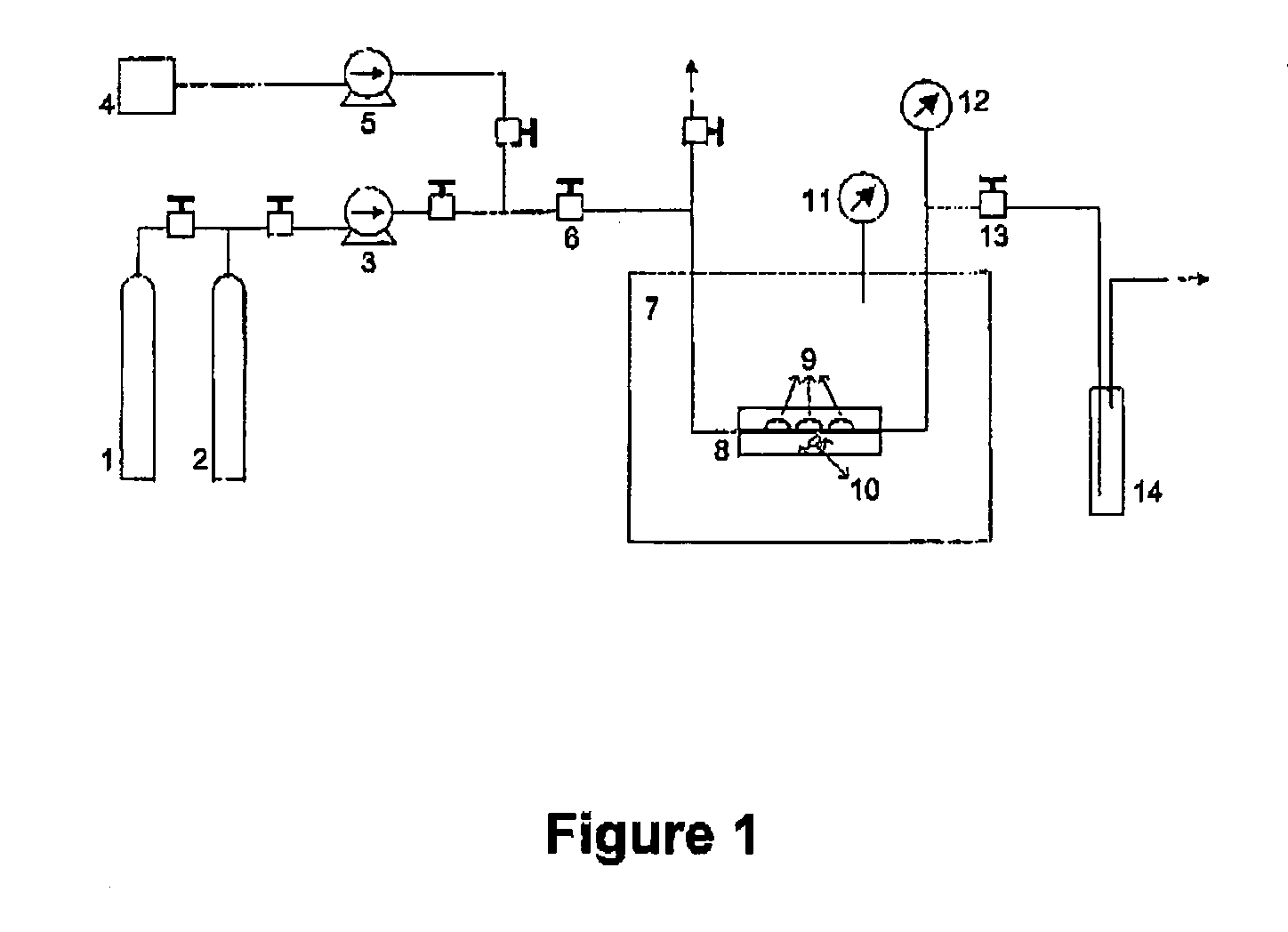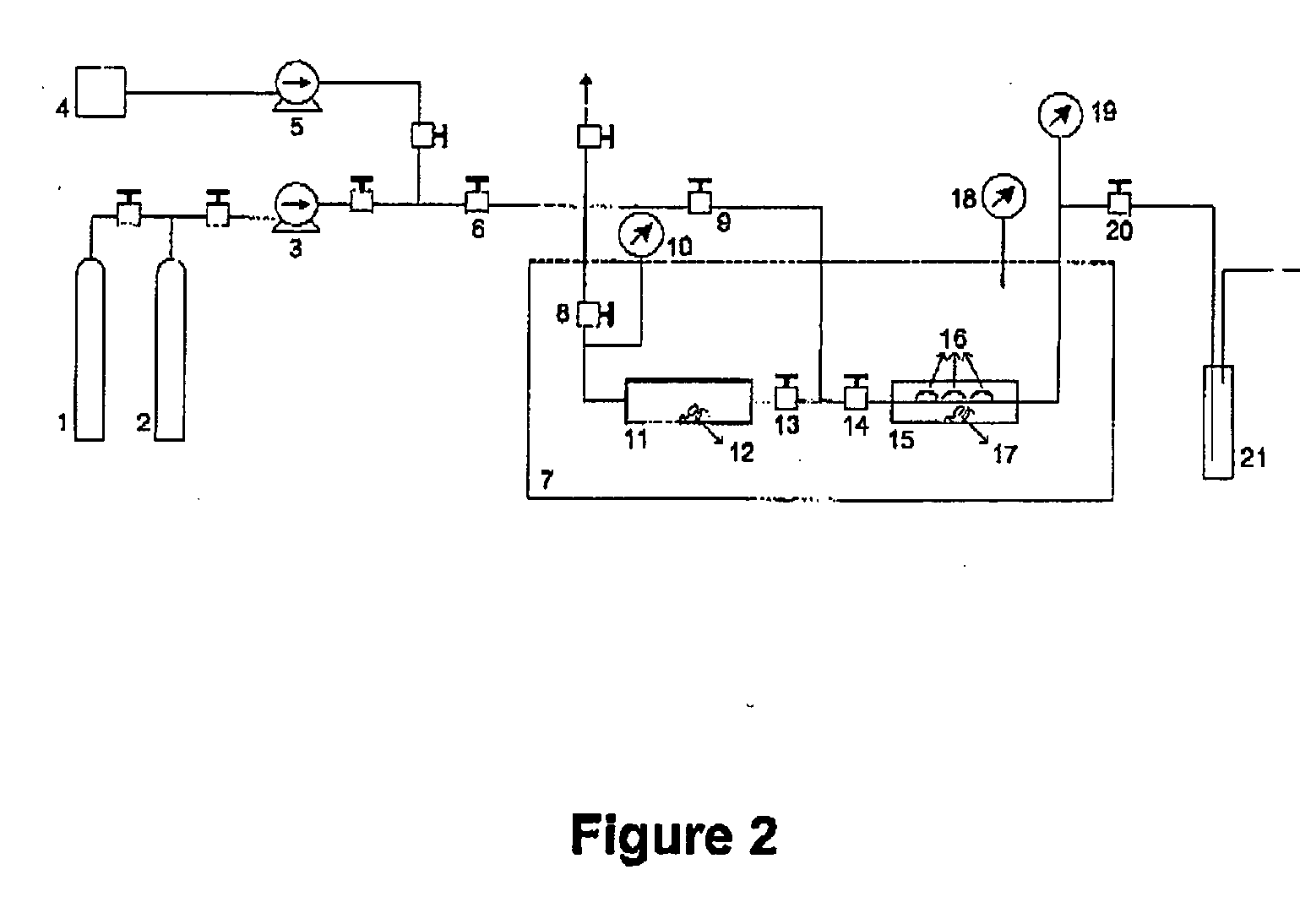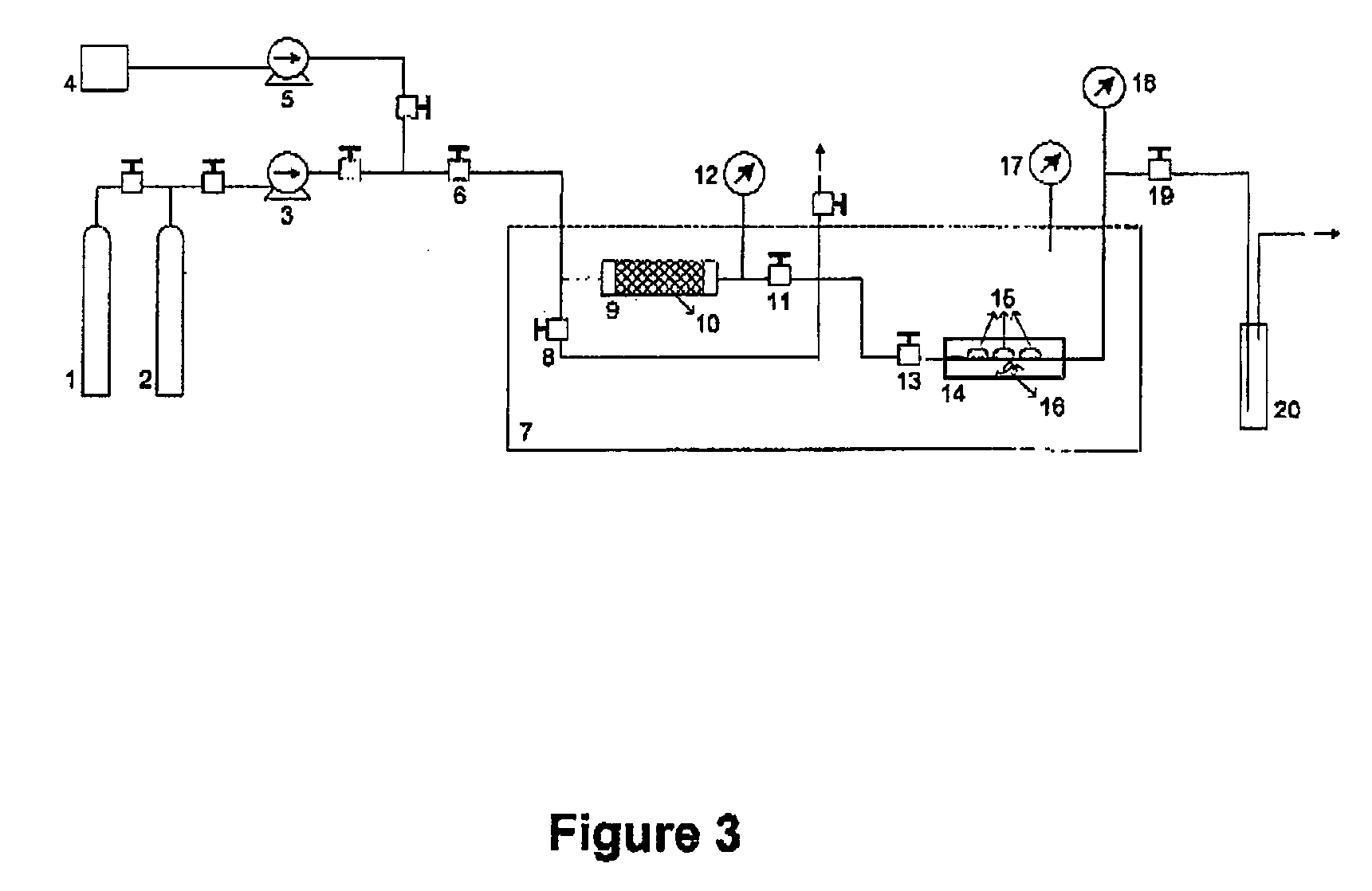Method for preparing therapeutic ophthalmic articles using compressed fluids
a technology of compressed fluids and ophthalmic articles, which is applied in the field of process to prepare therapeutic ophthalmic articles using compressed fluids, can solve the problems of difficult to completely remove this solvent from the polymer/additive system, difficult to impregnate polymers and copolymers, and degrade the substances involved
- Summary
- Abstract
- Description
- Claims
- Application Information
AI Technical Summary
Problems solved by technology
Method used
Image
Examples
example 1
[0113] A Focus® Monthly® (Ciba Vision, Ga., USA) hydrogel contact lens (ionic, high hydration, FDA Group IV, 55% water+45% Vifilcon A copolymer) was treated by means of the above-mentioned first embodiment of the process, in accordance with the invention and according to FIG. 1. The ophthalmic article was contacted in a sealed high pressure vessel with a mixture of compressed carbon Dioxide (99.998% purity, Air Liquid), Flurbiprofen (CAS[5104-49-4], 97% purity, Sigma-Aldrich) and Ethanol (CAS[64-17-5], 99.8% purity, Fluka), as co-solvent (5% molar in respect of carbon Dioxide). The operating conditions were 90.0 bar and 40.0° C. No stirring was employed. After a 30 minute processing time, the vessel was slowly expanded (for 1.5 minutes) and the compressed fluid (carbon Dioxide) was removed. Part of the co-solvent (Ethanol) was dragged out of the system by the Carbon Dioxide, while its remaining part precipitated, as a liquid, to the bottom of the high pressure vessel. The high press...
example 2
[0116] A Focus® Monthly® (Ciba Vision, Ga., USA) hydrogel contact lens (ionic, high hydration, FDA Group IV, 55% water+45% Vifilcon A copolymer) was treated by means of the above-mentioned first embodiment of the process, in accordance with the invention and according to FIG. 1. The ophthalmic article was contacted in a sealed high pressure vessel with a mixture of Carbon Dioxide (99.998% purity, Air Liquide) and Flurbiprofen (CAS[5104-49-4], 97% purity, Sigma-Aldrich). No co-solvent was added. The operating conditions were 90.0 bar and 40.0° C. No stirring was employed. After a 30 minute processing time, the vessel was slowly expanded (for 15 minutes) and the compressed fluid (Carbon Dioxide) was removed. The high pressure vessel was then removed from the temperature controlled bath, opened and the ophthalmic article was recovered, impregnated with Flurbiprofen.
[0117] The in vitro kinetic studies concerning the release of Flurbiprofen were conducted in accordance with the experime...
example 3
[0119] Two Focus® Dailies® (Ciba Vision, Ga., USA) hydrogel contact lenses (non ionic, high hydration, FDA Group II, 69% water+31% Nelfilcon A copolymer) were separately treated in two different experiments (I and II) by means of the above-mentioned third embodiment of the process, in accordance with the invention and according to FIG. 3. In both experiments, the ophthalmic articles processed were impregnated with Flurbiprofen (CAS[5104-49-4], 97% purity, Sigma-Aldrich) using Carbon Dioxide (99.998% purity, Air Liquide). No co-solvent was added and no stirring was employed.
[0120] In experiment I, the operating conditions were 41° C. and 90 bar, while in experiment II the operating conditions were 41° C. and 120 bar. In both experiments, drug solubilization was carried out for 1 hour and 30 minutes, and impregnation was carried out for 1 hour. After impregnation, the vessel was slowly depressurized (for 15 minutes) and the compressed fluid (Carbon Dioxide) was removed. The high pres...
PUM
| Property | Measurement | Unit |
|---|---|---|
| operating temperature | aaaaa | aaaaa |
| operating temperature | aaaaa | aaaaa |
| operating temperature | aaaaa | aaaaa |
Abstract
Description
Claims
Application Information
 Login to View More
Login to View More - R&D
- Intellectual Property
- Life Sciences
- Materials
- Tech Scout
- Unparalleled Data Quality
- Higher Quality Content
- 60% Fewer Hallucinations
Browse by: Latest US Patents, China's latest patents, Technical Efficacy Thesaurus, Application Domain, Technology Topic, Popular Technical Reports.
© 2025 PatSnap. All rights reserved.Legal|Privacy policy|Modern Slavery Act Transparency Statement|Sitemap|About US| Contact US: help@patsnap.com



